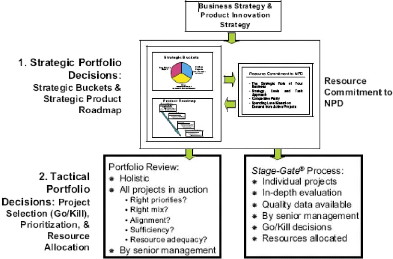
Revenue is the total amount of income from the sale of a company’s products or services. For example, revenue for a grocery store would include the sale of everything from produce to dog food. Revenue is found at the very top of an income statement, and all profitability calculations begin with revenue, which is why it’s often referred to as a company’s “top line” number. EBIT is calculated by subtracting a company’s cost of goods sold (COGS) and its operating expenses from its revenue.

It also earned $66 million in interest and $417 million in equity and other income. Net income is the profit remaining after all expenses, including business taxes—which is why it’s also sometimes referred to as net income after taxes (NIAT). A company’s income statement will also show its net income before taxes, which can be helpful when comparing businesses in states that have different tax rates. The term net income can also be used in personal finance to describe an individual’s earnings after deductions and taxes.
What Is the Formula for Calculating NOI?
So, monetary considerations will vary from person to person and aren’t included in the formula for NOI. NOI gives investors a good baseline to compare properties and incomes but should not be considered a direct comparison of all costs. If vacancy losses are 10% (PRI ✕ .10) that would equal $7,200 per year. The total PRI ($72,000) minus the vacancy losses ($7,200) brings the gross operating income (GOI) down to $64,800.

It’s important not to confuse income with cash flow, and to know which expenses are included and disregarded in the net operating income formula. Operating profit, like gross profit and net profit, is a key financial metric used to determine the company’s worth for a potential buyout. The higher the operating profit as time goes by, the more effectively a company’s core business is being carried out.
What are Revenue and Gross Profit?
It’s the total cash required by the investor or owner to pay back debt obligations. Operating income is the gauge of your company’s profitability in its primary business, especially when compared to Net Operating Income competitors. Net income indicates how much is left for your business to add to retained earnings and build up equity, or for payment of distributions or dividends to the owners or shareholders.
Zepp Health Corporation Reports Second Quarter 2023 Unaudited … – PR Newswire
Zepp Health Corporation Reports Second Quarter 2023 Unaudited ….
Posted: Mon, 21 Aug 2023 10:15:00 GMT [source]
(To calculate NOI, simply subtract total operating expenses from total income). Remember, NOI is just one tool that can help business owners and investors make better financial decisions. Make sure you consider your specific needs before making real estate investment decisions. Net operating income doesn’t include expenses like debt payments, mortgage payments, depreciation, or capital expenditures in the calculation. However, NOI lets you compare the profitability of properties when buying or selling real estate. Because of this, some investors consider NOI to be the most critical metric in real estate investing.
Operating profit is the amount of revenue that remains after subtracting a company’s variable and fixed operating expenses. In other words, operating profit is the profit a company earns from its business. The metric includes expenses for the raw materials used in production to create products for sale, called cost of goods sold or COGS. Operating profit also includes all of the day-to-day costs of running a business, such as rent, utilities, payroll, and depreciation.
Net Operating Income (NOI) Formula & Calculation
As a result, it’s often referred to as a company’s “bottom line” number. A company’s operating profit margin is operating profit as a percentage of revenue. So, if a company had an operating profit of $50 generated from $200 in revenue, the operating margin would be .25 ($50/$200). We multiply by 100 to move the decimal over by two places to create a percentage, meaning it would equal a 25% operating profit margin. Assume an investor purchases an apartment building in an all-cash deal.
Like NOI, cap rate is a foundational metric used among real estate investors to analyze potential investments. Net operating income is calculated by deducting operating expenses from the effective gross income, which is the difference between potential gross income and vacancy loss. For financed properties, NOI is also used in the debt coverage ratio (DCR), which tells lenders and investors whether a property’s income covers its operating expenses and debt payments. NOI is also used to calculate the net income multiplier, cash return on investment, and total return on investment.
Interest expense, interest income, and other non-operational revenue sources are not considered in computing for operating income. NOI is a metric used to measure the operating profitability of a specific property. Operating income is similar to a company’s earnings before interest and taxes (EBIT); it is also referred to as the operating profit or recurring profit. Both measurements calculate the amount of money a company earned less a few noncontrollable costs.
Examples of Net Income for Businesses
These costs include the salaries of sales and administration personnel, investments in marketing, office space and other expenses required to run the business that are not included in COGS. Operating income excludes non-operating expenses, such as capital expenditures, interest payments and taxes. Operating profit takes the profitability metric a step farther to include all operating expenses, including those included in the gross profit calculation.
This is the number that’s easy to stumble on because investors often think in terms of “best case scenario,” but this number only represents potential income versus actual income. While both operating profit and net income are measurements of profitability, operating profit is just one of many calculations that occur along the way from total revenue to net income. Earnings per share is net income divided by the company’s outstanding shares of common stock. Companies issue stock to raise money or capital, which is invested in the business to expand operations, grow sales, buy assets, and ultimately increase profit.
NexLiving Communities Net Operating Income Rises 58% in the Second Quarter – Marketscreener.com
NexLiving Communities Net Operating Income Rises 58% in the Second Quarter.
Posted: Thu, 17 Aug 2023 20:27:10 GMT [source]
A company can also decide to adjust its operating profit to deduct deferred taxes. Net income, on the other hand, shows the profit remaining after all costs incurred in the period have been subtracted from revenue generated from sales. Based on the formula above, the primary components of NOI are total revenues and total operating expenses. The total revenue includes all of the income from a real estate property, not just the rent. In some buildings, that may include the additional income from renting out parking or storage spaces, or the revenue from on-site vending machines or laundry services.
This powerful calculation enables real estate investors to make financial decisions at a glance. While revenue does not incorporate any expenses, operating income does. Let us assume that you own a property that annually pulls in $120,000 in revenues and incurs $80,000 in operating expenses. In this circumstance, it will have a resulting NOI of $40,000 ($120,000 – $80,000).
What is the difference between net operating income and net income?
Suppose the annual operating revenue from a single-family rental unit is $21,600. That means your net income after the property’s operating expenses is $16,800. Net operating income is also often interpreted as the cash flow generated by a real estate property. Investors often substitute cash flows into a discounted cash flow (DCF) model with NOI when valuing real estate.
Then, other income from vending machines, parking fees, laundry, and signage would be added together. At Business.org, our research is meant to offer general product and service recommendations. We don’t guarantee that our suggestions will work best for each individual or business, so consider your unique needs when choosing products and services. It can be easy to confuse the terms “gross” and “net” since they are pretty similar. However, it’s important that you understand the difference because it may affect your financial decision-making.
Want More Helpful Articles About Running a Business?
Further, where an investor owns multiple properties, net income (or NIBT) may be calculated or presented at the portfolio level. This also makes understanding each individual property’s profitability (or ability to generate cash flow) difficult to understand. The formula works by considering all income a property makes minus all of the general expenses. For example, a property may earn money from tenant rents and a coin laundry machine.
- The higher the NOI margin, the greater the proportion of property revenue that is converted into net operating income (NOI).
- It’s important to know your NOI so you can compare it to the NOIs of other properties; you can work to increase it to maximize your cash flow and use it to figure out the property’s cap rate and ROI.
- This powerful calculation enables real estate investors to make financial decisions at a glance.
- It can be compared to the entire value of the property if that property had been paid fully in cash.
- Net operating income is also often interpreted as the cash flow generated by a real estate property.
Operating an investment property can be expensive, and yes, there will be years when more capital is required for maintenance. However, because this expense can vary widely year-to-year and property-to-property, you do not include large one-time expenses in an NOI calculation. Depreciation isn’t an actual expense because you never “pay” for depreciation out of pocket like with cash or check. NOI is a pre-tax calculation, which means all taxes are excluded from the formula. Tax expenses also vary widely by the investor, and since NOI is specific to the property, not the person, it’s not included in the formula for NOI. Potential rental income (PRI) is how much you’d make if a rental property was 100% leased, 100% of the time.
- In commerce, net income is what the business has left over after all expenses, including salary and wages, cost of goods or raw material and taxes.
- Net operating income is a valuation method used by real estate professionals to determine the precise value of their income-producing properties.
- An up-to-date income statement is just one report small businesses gain access to through Bench.
- In fact, without this metric, it’s almost impossible to fully understand real estate investments.
EBIT can also be calculated as operating revenue and non-operating income, less operating expenses. While net income reflects the accounting profit that a business makes during a specific period, cash flow reflects the amount of money that actually comes in or goes out. Positive cash flow means the business can pay routine expenses and meet short-term financial obligations. However, obtaining both variables of this equation requires a few steps. Gross operating income is derived from gross potential income, or the maximum a property produces if all of its rental space is filled.

